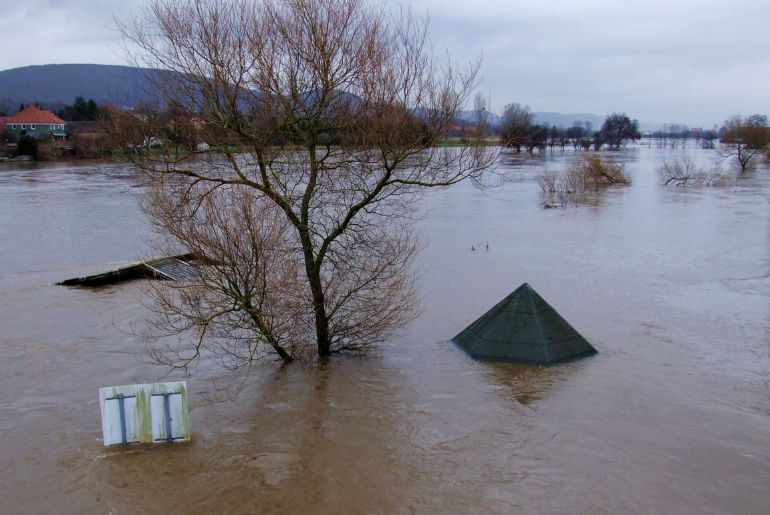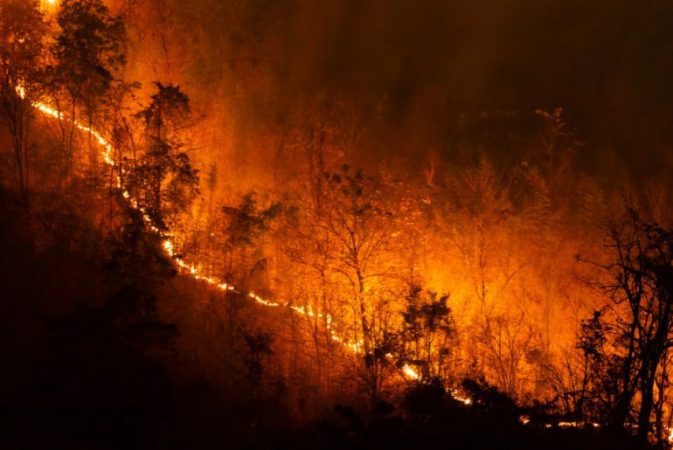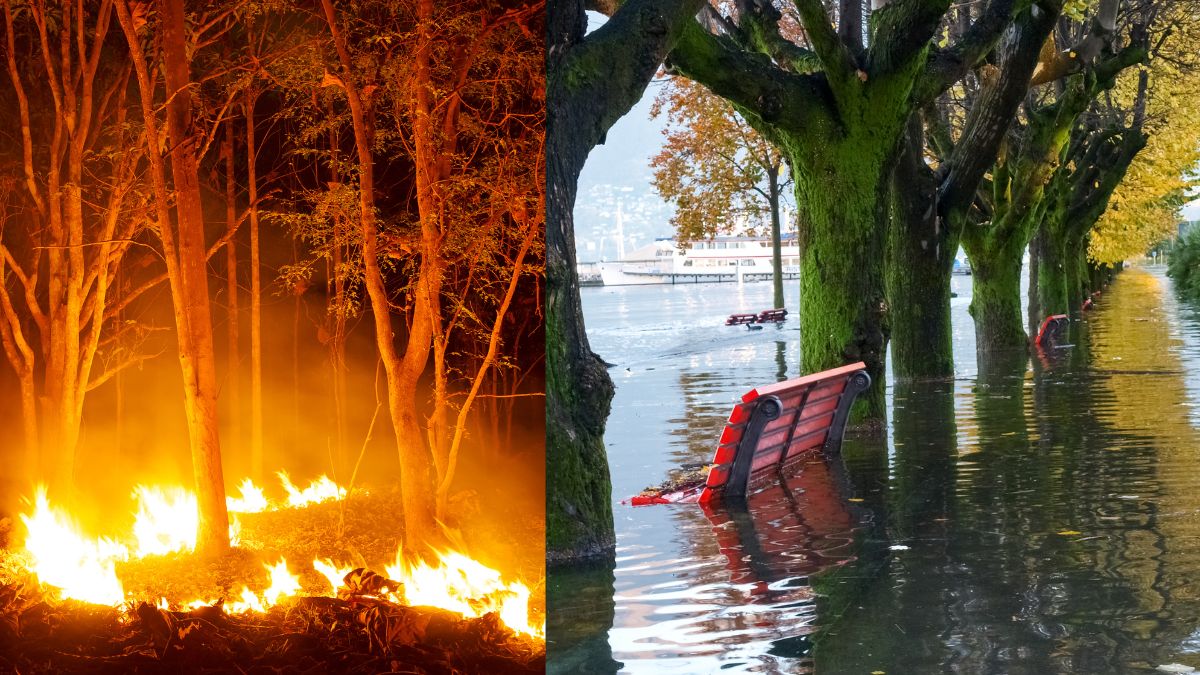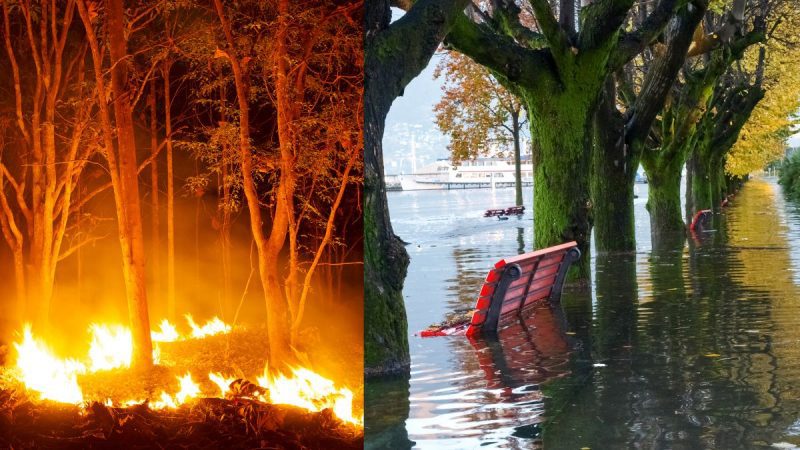Europe has experienced unprecedented weather events this summer. From ferocious wildfires to catastrophic floods, the severity and frequency of these natural disasters have raised significant concerns. The dramatic changes in Europe’s summer weather patterns this year are a stark reminder of the urgent need to address climate change and its far-reaching impacts.
From Floods In Switzerland To Wildfires In Greece

Image for representation
Switzerland is on alert following days of intense rain. This has resulted in extensive damage. This included a landslide that submerged a portion of a community in the southeast of the nation. Images and videos featured rivers overflowing, a crumbling road, and debris engulfing sections of the Misox valley in the Graubuenden canton. The well-known tourist destination of Zermatt, which is near the Matterhorn, was briefly cut off from the rest of the nation by the rains. Turkey was also afflicted by summer flames; two villages had to be evacuated, although no casualties were reported. A massive blaze on the outskirts of Athens was contained by a significant number of Greek firemen and water-bombing planes. The fires forced officials to evacuate two adjoining settlements.
In recent days, dozens of wildfires have started in Greece due to the intense summer heat. But they were put out before causing significant damage. Greece’s dry, hot summers are prone to wildfires, which have claimed many lives in recent years. Authorities have issued a warning, citing a particularly high risk this summer due to the warm, dry winter that has left the vegetation nearly completely dry.
Also Read: Travellers Skip Famous European Cities For Brussels, Munich & More; Heat & Budget Influence Plans
The Reason Behind This European Summer?

Europe’s summer 2024 has seen some of the highest temperatures ever recorded in Europe. Prolonged heatwaves have swept across Southern Europe, leading to widespread drought conditions. In regions like Greece, Italy, and Spain, these extreme temperatures have created the perfect conditions for wildfires. Parched landscapes, combined with high winds, have allowed fires to spread rapidly.
Climate change remains the most significant driver behind the anomalous weather patterns observed in Europe. The unprecedented rainfall overwhelmed drainage systems and riverbanks, leading to flash floods and widespread devastation. In many parts of Europe, rapid urbanisation has prevented the natural absorption of rainfall. This has increased the risk of flash floods as water runoff quickly overwhelms drainage systems. The amount of heat stored in the oceans also hit a record high. The transition from La Niña to El Niño, and conditions in the Indian Ocean, contributed to an increase in global upper ocean heat content.
Up to 90% of the surplus heat is due to greenhouse gas emissions absorbed by the ocean. The heat content of the ocean is rising, especially in the higher layers. Sea levels are rising as a result of the substantial melting of glaciers, sea ice, and ice sheets.
The interplay of rising global temperatures, atmospheric anomalies, and human activity has created a perfect storm of extreme weather events, from wildfires to floods in Europe.
Cover image credits: Canva
First Published: June 24, 2024 6:37 PM




